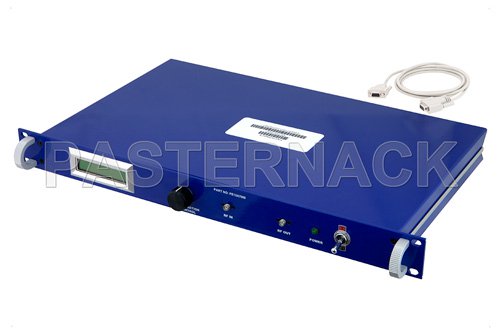 A Voltage Variable, variable gain, or voltage controlled amplifier is a type of amplifier with a gain dependent on a control voltage input. These amplifiers are the backbone of amplitude modulation circuits. There are a wide range of types and styles of VCA’s that use various methods of controlling the gain. Some VCAs use voltage control as an input into the feedback network of an amplifier, which then adjusts the gain of the amplifier. A voltage controlled resistor (VCR) could be used within an inverting op-amp’s feedback network to realize a VCA.
A Voltage Variable, variable gain, or voltage controlled amplifier is a type of amplifier with a gain dependent on a control voltage input. These amplifiers are the backbone of amplitude modulation circuits. There are a wide range of types and styles of VCA’s that use various methods of controlling the gain. Some VCAs use voltage control as an input into the feedback network of an amplifier, which then adjusts the gain of the amplifier. A voltage controlled resistor (VCR) could be used within an inverting op-amp’s feedback network to realize a VCA.
Some methods of controlling the gain of an amplifier also have substantial impact on the frequency performance of the device. Hence, it is common to use variable attenuators at the output of the amplifier to control the signal level without changing the frequency performance of the amplifier.
Like with typical amplifiers, VCAs can be made to amplify signals over a wide bandwidth or narrow bandwidth depending on the application. VCAs used in test equipment, military communications, radar testing, and etc. are likely to have extremely wide bandwidths and wide gain variation range, or variable attenuation range. Therefore, wideband VCAs benefit from good gain flatness performance, especially when testing frequency agile radar and wideband communication protocols.
Like with most RF amplifiers, linearity is an important performance feature for VCAs, especially if the application is for instrument test racks or test laboratories. Another critical performance parameter is the noise figure of the VCA, as a high noise figure would limit a VCA’s usefulness in many test scenarios.
Key Variable Gain Amplifier Performance Parameters
• Frequency Range
• Gain Flatness
• Input/Output VSWR
• Linearity (OP1dB)
• Gain range or attenuation range
• Minimum Gain
• Control features
• Connectors
• Gain/attenuation step size
• Noise Figure
• Power supply
VCAs can be controlled using a variable attenuator that is manually controlled, or more sophisticated control can be applied. Some VCAs use analog voltage inputs to control the gain, while others have digital inputs, such as RS-232, to set the gain/attenuation levels. VCAs with digital control are also called digital variable gain amplifiers (DVGAs).
Thermal management is important for VCAs that operate under high power and high frequency conditions, as much signal energy is converted to heat during normal attenuating operation. Hence, the housing and assembly design must account for this thermal flux created by the unit. This is why wide bandwidth and high frequency VCAs with wide gain/attenuation ranges are often assembled as rack-mount units and other formats that are suited for integration thermal management systems.
Learn more about Pasternack’s Variable Gain Amplifier offering here: https://www.pasternack.com/50-db-gain-variable-gain-amplifier-rack-mount-6.5-db-sma-pe15a7000-p.aspx




 Pasternack Blog
Pasternack Blog
